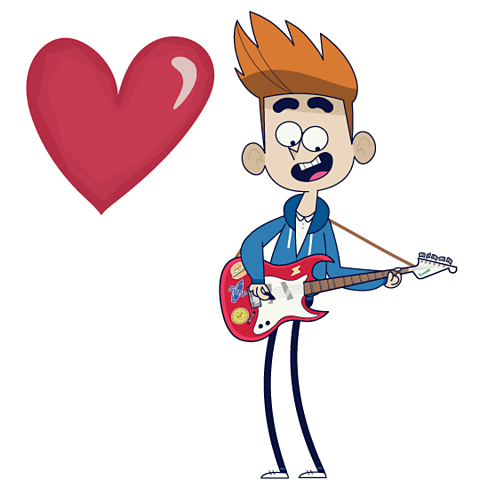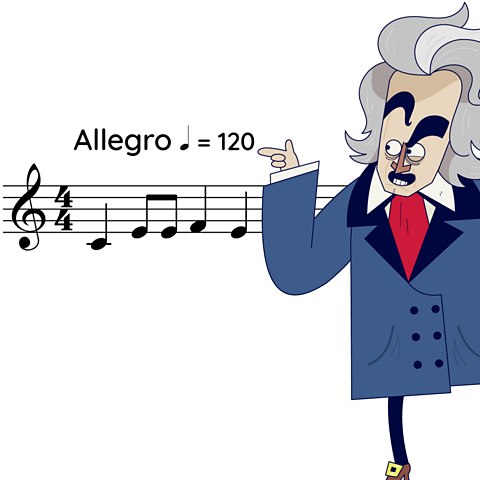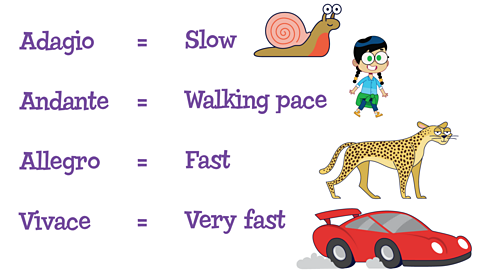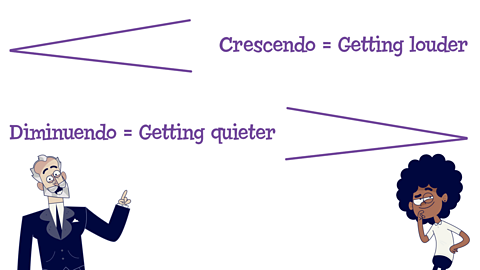What is tempo?

Tempo is the speed of the music.
The pulse or beat controls how fast or slow the tempo is.
The tempo of a piece of music can be described using words such as as slow or very fast.


Sometimes the tempo is shown on music scores using numbers.
This number is the amount of beats per minute (BPM). So the higher the number, the faster the tempo.
- 60BPM is one beat per second.
- 120BPM is two beats per second.
Noting the tempo with the BPM and musical words gives musicians a very clear idea of how it should be played.
Translating tempo
When reading music, you will often find words written in Italian or German describing the tempo. Here's a few of the most common to get you started.

Sometimes in music, the tempo changes suddenly. But other times the tempo might change gradually.
When this happens you might see these terms.
- Accelerando = getting quicker
- Rallentando / Ritardando = getting slower
What are dynamics?

Dynamics describe the volume of music and how quietly or loudly a piece of music should be played.
Dynamics are an important way of getting across the mood of a piece of music to the listener.
Watch: 'Russian Dance from The Nutcracker' by Tchaikovsky
Tchaikovsky was a master of using dynamics in his music to change how listeners would feel.
How does this piece make you feel? What words would you use to describe the dynamics?
Pytor Ilyich Tchaikovsky wrote some of the most famous pieces of music of all time. This performance is taken from Ten Pieces III.
You can watch and listen to Tchaikovsky on │╔╚╦┐ь╩╓ Ten Pieces.
Translating dynamics
As with tempo, you often find words in German or Italian to describe the dynamics of a piece of music.
As well as words, dynamics can be shown in symbols.

Just like tempo, the dynamics can change suddenly or gradually over a period of time. You may see this described by these words or symbols.

Listen to Edward Grieg
Take a listen to this piece of music called In the Hall of the Mountain King by Edward Grieg.
It's a story of a young boy called Peer Gynt who is trying to escape from an evil mountain troll.
Listen carefully to how Grieg uses tempo and dynamics to help tell the story.
How does the music make you feel? Can you use some of the terms above to describe the music?
Edvard Grieg - In the Hall of the Mountain King from 'Peer Gynt'. Performed by │╔╚╦┐ь╩╓ National Orchestra of Wales
You can watch and listen to Grieg on │╔╚╦┐ь╩╓ Ten Pieces.
Activities
Bitesize Primary games. gameBitesize Primary games
Play fun and educational primary games in science, maths, English, history, geography, art, computing and modern languages.

More on Playing and Performing
Find out more by working through a topic
- count7 of 12

- count8 of 12

- count9 of 12

- count10 of 12
